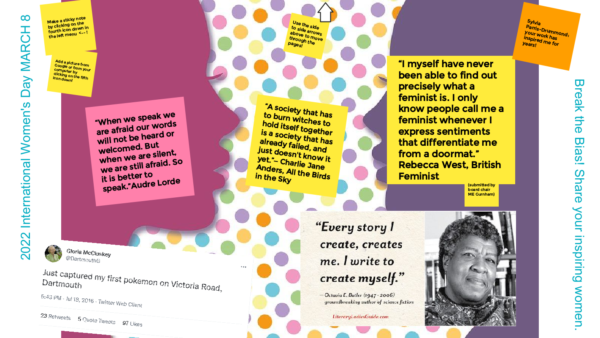Social Innovation and Systems Change News Notes: March 11, 2022

Co-op housing rises again in the Tara Inn.
The Nova Scotia Co-operative Council has purchased the Tara Inn in New Glasgow and will be converting the property to safe, affordable housing. If you, too, have been asking, “What about housing cooperatives? Where are they?” during this growing crisis–they’re back!
History Repeats: “affordable housing” edition
Perhaps the last time that affordable housing was in such short supply may have been in the 1950s national housing shortage, which saw the federal government doling out money for affordable housing generously with much discretion left to municipalities. This contributed to the destruction of “slums” (to use the term of the time), including the razing of the community of Africville.
Read the history of Gottingen here, paying special attention to sections 14 and 15.
The 1954 NHA amendment provided federal and provincial cost-sharing for the clearance of “slum” housing replaced by new affordable or public housing.[56] The wide-ranging urban renewal policies enacted in the 1956 and 1964 NHA amendments provided financial incentives for municipalities to “preserve and protect” central business districts through land assembly.[57] The 1956 NHA enabled municipalities to clear land that was predominantly residential either before or after redevelopment: municipalities could establish the “highest and best use for the area.”[58] Consequently, “it became possible to clear slum housing and dispose of the land for whatever use was indicated in the municipal plan for the area.”[59] The federal government also provided funding for municipalities to conduct urban renewal studies and slum identification surveys.[60] With the introduction of federal grants covering as much as 75 per cent of program costs, almost all Canadian cities enacted some sort of urban renewal over the next decade, Halifax included.[61]
Stop hiring for “fit”
Margaret Schwartz writes for P4G’s blog on the dangers and consequences of hiring for “fit”: bias, status quo and missing out on the best benefits of a diverse team. Which is absolutely true and also interesting because one of the things that job seekers are advised is to find a place with an amenable culture. A conundrum? What do you think?
International Women’s Day – 2 parts!

Part 1
March 8 was International Women’s Day. As an experiment I tossed a Jamboard out into the world and invited people to share quotes or inspiration from or by women. Perhaps unsurprisingly (because we don’t have a huge following, and many people don’t know what Jamboard is), there were only a few respondents. You can still contribute if you feel called to.
The posts are anonymous unless you are signed in to Google and happen to see someone in the process of posting.
Part 2
We were delighted as an organization to celebrate our Executive Director, Louise Adongo, who was recognized on IWD by Atlantic Business Magazine as one of the top 25 Most Powerful Women in Business in our region.

Final note: Charlene versus Google Image
We are working through Acumen Academy’s excellent Systems Practice course as an organization. As part of the work, we are crafting visualizations and therefore I had cause last night to Google image search the term “poverty”.
I encourage you to take a moment and visualize what you think of as ‘poverty’ before you do this.
Trigger warning: Rage and frustration ahead.
My search results were almost uniformly slums and shantytowns in various African countries, India, Brazil and Central America. Interspersed with building photos were images of children… brown children, emaciated, dirty, looking sad. My friend Baf once pointed out to me the ‘African kid with a fly’ trope and now I see it everywhere. Poverty porn. Google is our de facto world central resource bank; this experiment helped underline how extensive is the implicit bias that haunts our work, Google, algorithms and the internet at large. Give it a try.
(For bonus rage points, then image search “wealthy”.)
We are indeed blessed and privileged with great wealth in our country, as compared to some parts of the world. AND. All those who live in poverty are not brown. AND. All those who are brown do not live in poverty! AND. There are people who live in devastating poverty in every part of the world. AND. Stop posting pictures of dirty children. Dirty and poor are not the same thing. Poor folks know about bathing.
Share this:
Comments are closed